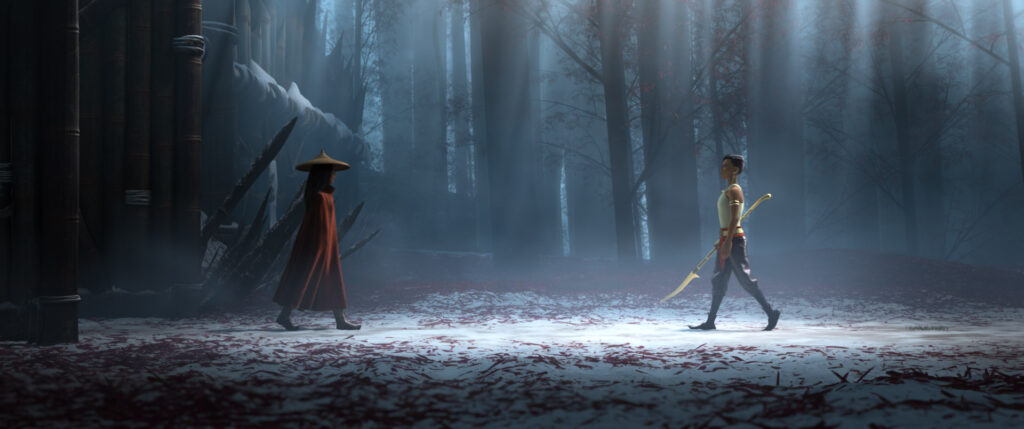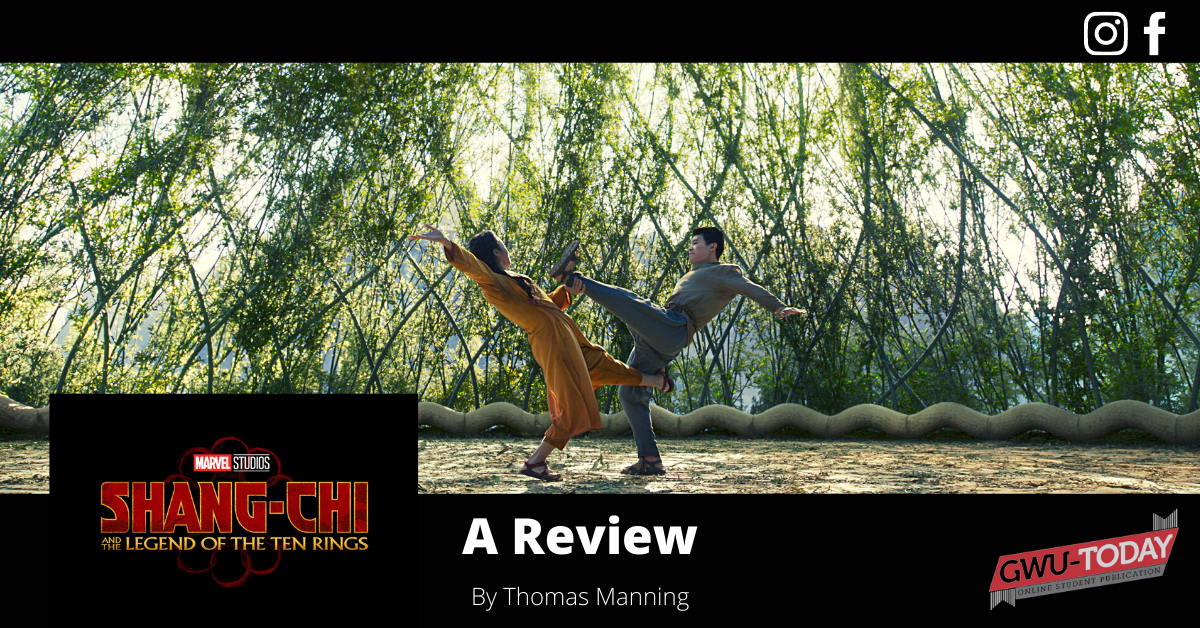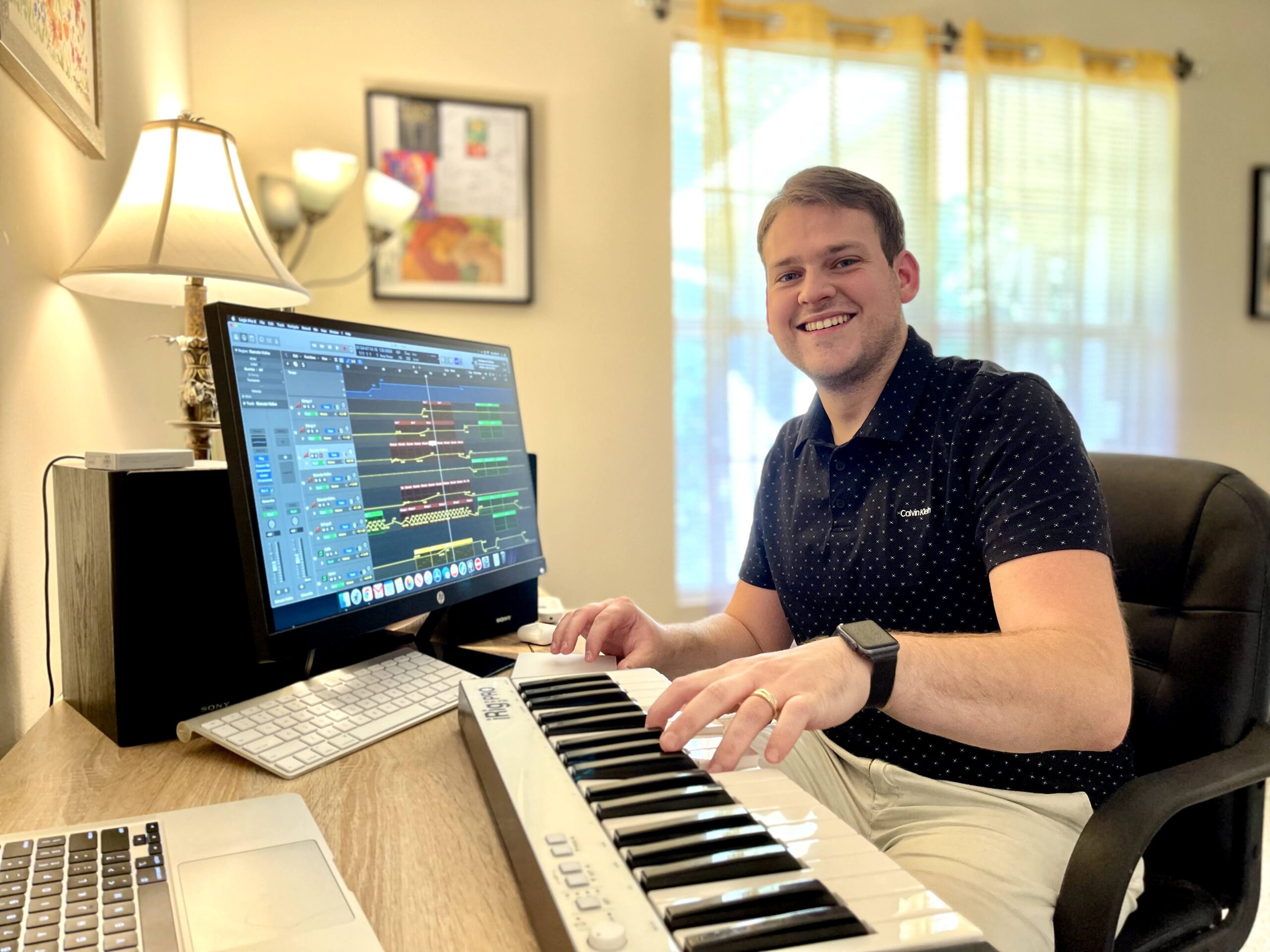
Disney Animation’s latest production, “Raya and the Last Dragon,” comes from directors Don Hall and Carlos López Estrada, along with co-directors Paul Briggs and John Ripa. A total of six writers are also credited – Qui Nguyen, Adele Lim, Briggs, Hall, Estrada, Ripa, Kiel Murray, and Dean Wellins. Projects with this many creative voices thrown together have been known to fall prey to tonal dissonance and narrative imbalances. Also taking into account the ambitious endeavor of introducing an audience to new characters, a new world, and new mythology and lore, the fact that “Raya” succeeds on so many levels is all the more impressive.
In a fantastical story of dragon legend and ancient magic that combines elements of “The Lord of the Rings,” “The Marvel Infinity Saga,” and even heist flicks like “Mission: Impossible,” this film contains familiar elements and narrative beats that are delivered in a fresh package of thrills, laughs, and even a few tears along the way. The sheer depth of the new universe established in a runtime slightly less than two hours is truly incredible. As of yet, there have been no plans announced for sequels or spin-offs, but the franchise potential of “Raya and the Last Dragon” is off the charts.
The chemistry among the characters and voice talent lends a lot to the qualities of this world that make you want to stick around. Led by Kelly Marie Tran and Awkwafina in the titular roles of Raya and Sisu (AKA “The Last Dragon”), respectively, sparks of charisma and charm fly between these two actors, even as the space they occupy together is completely virtual. Supporting voice roles from the likes of Gemma Chan, Daniel Dae Kim, Benedict Wong, and Sandra Oh add more layers of enchantment and magnetism to the dazzling personality of the film.

The animation technology brought to the table by the Disney empire has always been a step above the rest of the competition, and what we see with “Raya and the Last Dragon” continues that upward trend of progression and innovation. The globe-trotting story calls for five specific environments and landscapes to be created, and each one is singularly unique, with a different color palette and lighting style than the last. Every painstaking detail is richly textured with breathtaking precision. Be sure to sit through the 12-minutes of credits to respect the admirable work of the thousands of digital artists who committed their hearts and souls to this craftsmanship.
The set pieces are choreographed with the same realism as some of the best live-action blockbusters of modern cinema. Just as the narrative is heavily influenced by the beauties of various facets of Asian culture, so too is the action direction. Action cinema is derived from the works of the great Japanese filmmaker Akira Kurosawa (1910-1998), and other filmmakers on the continent of Asia continued to build upon the strong foundations of his efforts. This inspiration spread westward, and the roots of Kurosawa can be found in practically all of American action movies today. “Raya and the Last Dragon” is an interesting case, in the sense that it is an animated American production, spoken in the English language, with a voice cast that is almost entirely of Asian descent and a story shaped by Asian mythology. This is a lovely illustration of the interconnectedness of artistic history, across generations and cultures around the world.

Just as the cycle of art brings humanity together in a poetic sense, it is only appropriate that the central theme of “Raya” is a concept that has the potential to unite or divide: trust. Trust in friends, family, and allies, but also trust in complete strangers. And, trust in the notion that people can change and become better versions of themselves. If you take a look at the world around us, between the horrors of the COVID-19 pandemic and the volatile political climate in the United States, trust is not guaranteed. In some circumstances, dishonesty and greed are little more than minor inconveniences in the grand scheme of things. But in other moments, selflessness and personal responsibility (or lack thereof) could literally be the difference between life and death, especially when it comes to a deadly virus, or politically motivated violence. This message at the core of the film is applicable to the young and old alike, which is crucial to the lasting impact of animated films of this disposition that attempt to bridge the gap between the generations.
There are a few nitpicks that you can make here and there with this film – some might find the pace to be a little bit frenetic on occasion. But, there is also time to breathe and reflect, if you are patient and attentive. The marvelous world of “Raya and the Last Dragon” is simultaneously a whimsical escape and a philosophical mirror of our own reality. In a time where we desperately need relevant art and film to help us be more present, aware, and gracious of our surroundings, “Raya” checks all the boxes.
Score: 4.5/5



